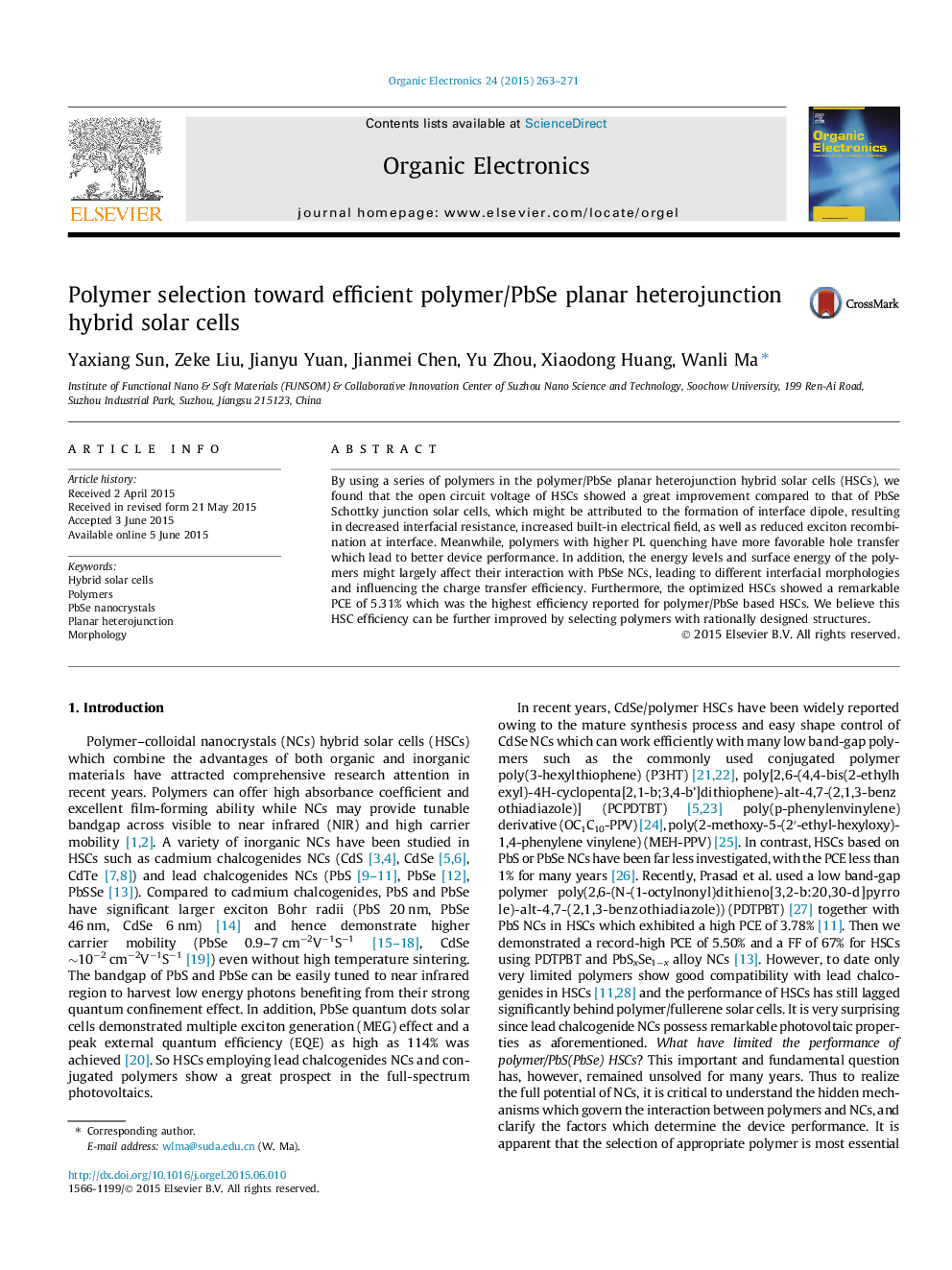| Article ID | Journal | Published Year | Pages | File Type |
|---|---|---|---|---|
| 1263707 | Organic Electronics | 2015 | 9 Pages |
•A PCE of 5.31% was obtained which was the highest efficiency reported for polymer/PbSe based hybrid solar cells (HSCs).•The open circuit voltage of HSCs showed a great improvement compared to that of PbSe Schottky junction devices.•The role of polymer in HSCs has been systematically investiated.
By using a series of polymers in the polymer/PbSe planar heterojunction hybrid solar cells (HSCs), we found that the open circuit voltage of HSCs showed a great improvement compared to that of PbSe Schottky junction solar cells, which might be attributed to the formation of interface dipole, resulting in decreased interfacial resistance, increased built-in electrical field, as well as reduced exciton recombination at interface. Meanwhile, polymers with higher PL quenching have more favorable hole transfer which lead to better device performance. In addition, the energy levels and surface energy of the polymers might largely affect their interaction with PbSe NCs, leading to different interfacial morphologies and influencing the charge transfer efficiency. Furthermore, the optimized HSCs showed a remarkable PCE of 5.31% which was the highest efficiency reported for polymer/PbSe based HSCs. We believe this HSC efficiency can be further improved by selecting polymers with rationally designed structures.
Graphical abstractBy using a series of polymers in the polymer/PbSe planar heterojunction hybrid solar cells (HSCs), an optimized PCE of 5.31% was obtained which was the highest efficiency reported for polymer/PbSe based HSCs. We believe this HSC efficiency can be further improved by selecting polymers with rationally designed structures.Figure optionsDownload full-size imageDownload as PowerPoint slide
